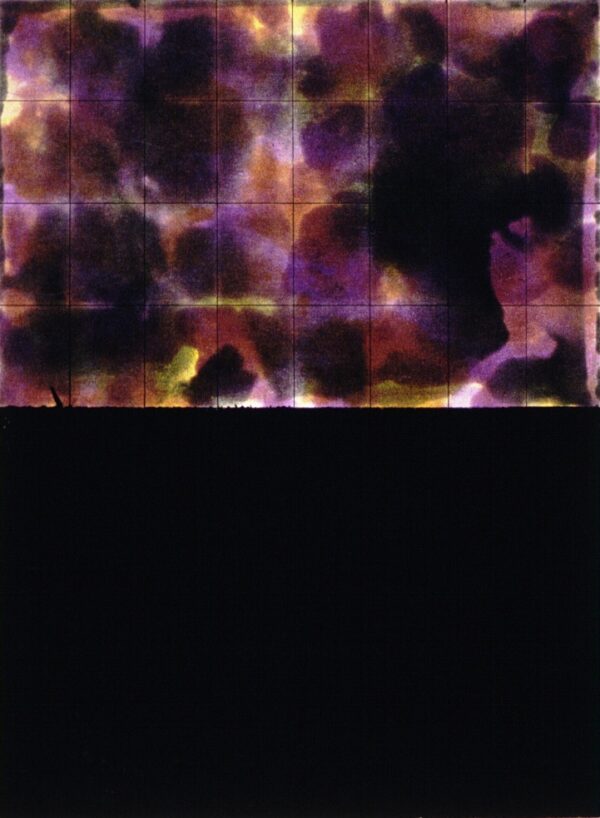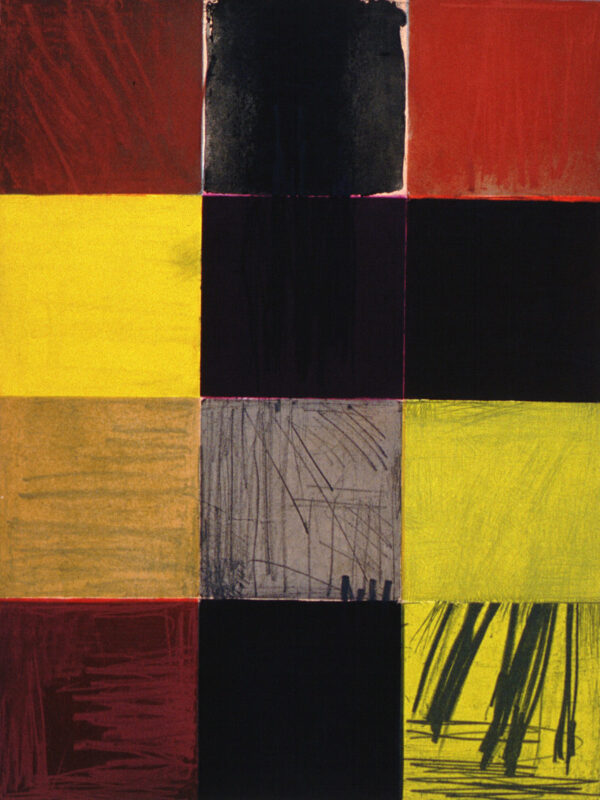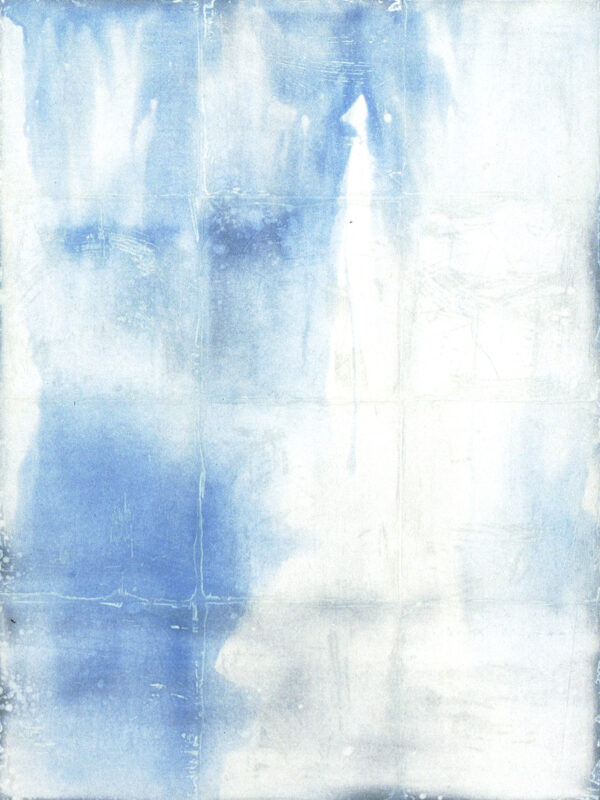Yutaka Yoshinaga has been described as “one of Japan’s most renowned artists who [focuses] on two-dimensional works on paper.” Born in Nagasaki in 1948, he is currently based in Tokyo. He studied at the Suidobata Institute of Art from 1966 to 1967 and the Funabashi Institute of Fine art from 1967 to 1968, and later taught in the visual art department of the Chiyoda School of Design. He is known for his use of pigment or pastel on washi, a type of traditional handmade Japanese paper. As a 1995 review in The Wise Collection newsletter reports “Yoshinaga produces astonishing effects that please the eye and encourage quiet contemplation.”
Yoshinaga creates large colorful grids made up of rectangular sections that vary in pigment concentration. To create the grids, he begins by folding a sheet of washi paper, typically so large as to involve his entire body in the process. He works one square at a time, adding layers of color by rubbing dry pigment into the paper to create different gradients with an “accumulation of touch.” The rubbing process wears down the washi paper until it eventually becomes frayed at the seams and the fibers unravel; the paper has a soft suede-like texture. “The beauty of this medium can be realized best when the characteristics of the Japanese paper are camouflaged,” Yoshinaga wrote in an exhibition catalogue published in 1989. “I just let myself be guided by the paper’s unpredictable behavior.”
Yoshinaga’s work is associated with a style called post-mono-ha. Mono-ha means “school of things” and the movement emerged in Tokyo in the mid-1960s, rejecting traditional ideas of representation and the values of Western modern art. The artists of the mono-ha movement used natural as well as industrial materials, including glass, light bulbs, cotton, paper, wood, rope, and water. Yoshinaga emphasizes material in his work by focusing on its physicality rather than its beauty. “These works are handmade,” Yoshinaga explained. “They are about my relationship to material and to time.”
In 1996, Yoshinaga worked in the Crown Point Press studio and made etchings in a similar fashion to his works on paper. First, he laid uneven aquatint grounds on copper plates that were then submerged in acid baths overnight; the acid bit the plates in deep variations to hold ample ink. To create more texture, he drew marks using soft ground etching and drypoint. In printing, he placed the plates together on the press bed to form a large grid. The finished prints are bold in form and color, signature to his style.
Yutaka Yoshinaga has shown in exhibitions throughout Japan, the United States, Mexico, Sweden, and Korea. His work is in the collections of the Rio de Janeiro Museum of Modern Art in Brazil; the National Gallery of Art in Washington, D.C; the Fine Arts Museums of San Francisco; and the Loft Museum of Contemporary Art in Japan. He lives in Tokyo, Japan.
–Carleigh Koger




